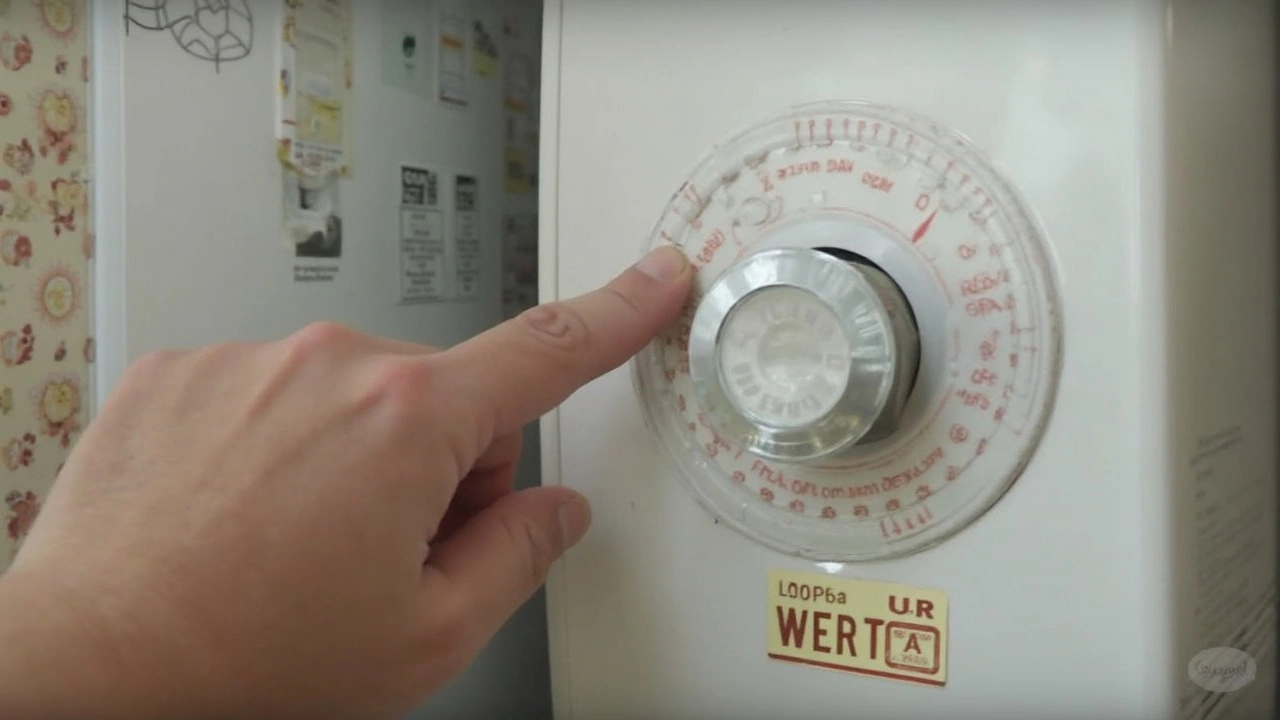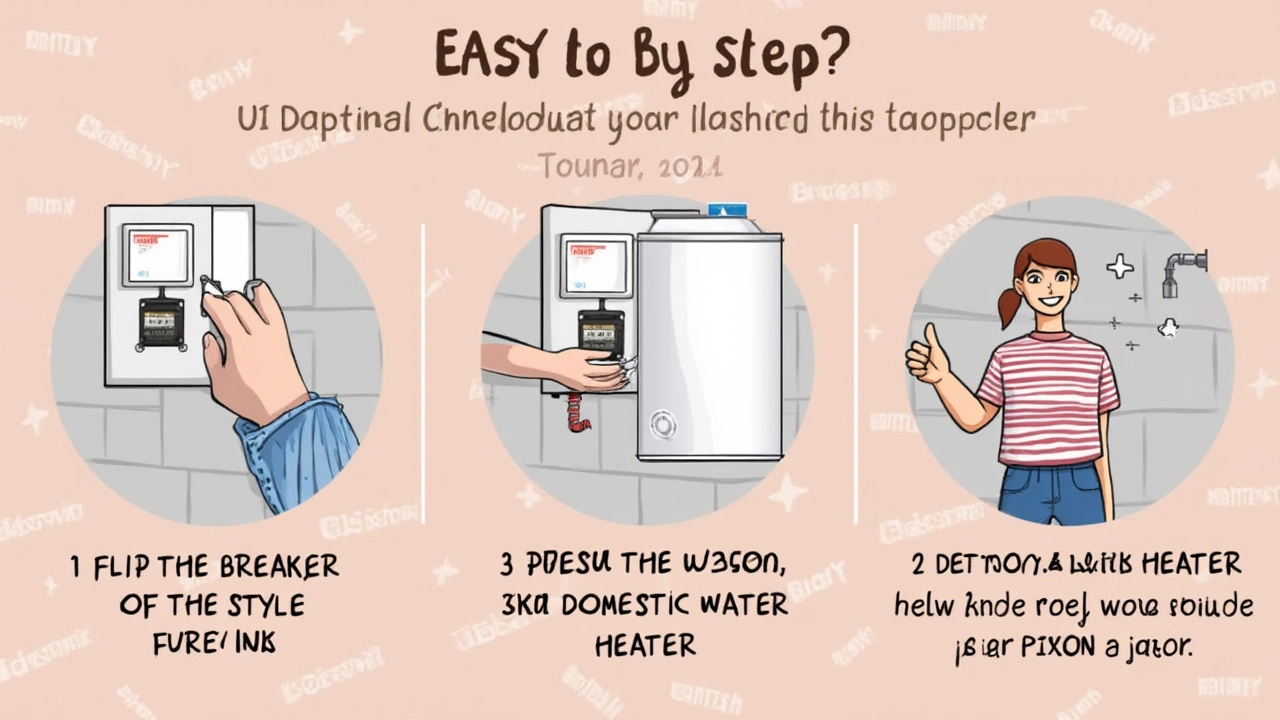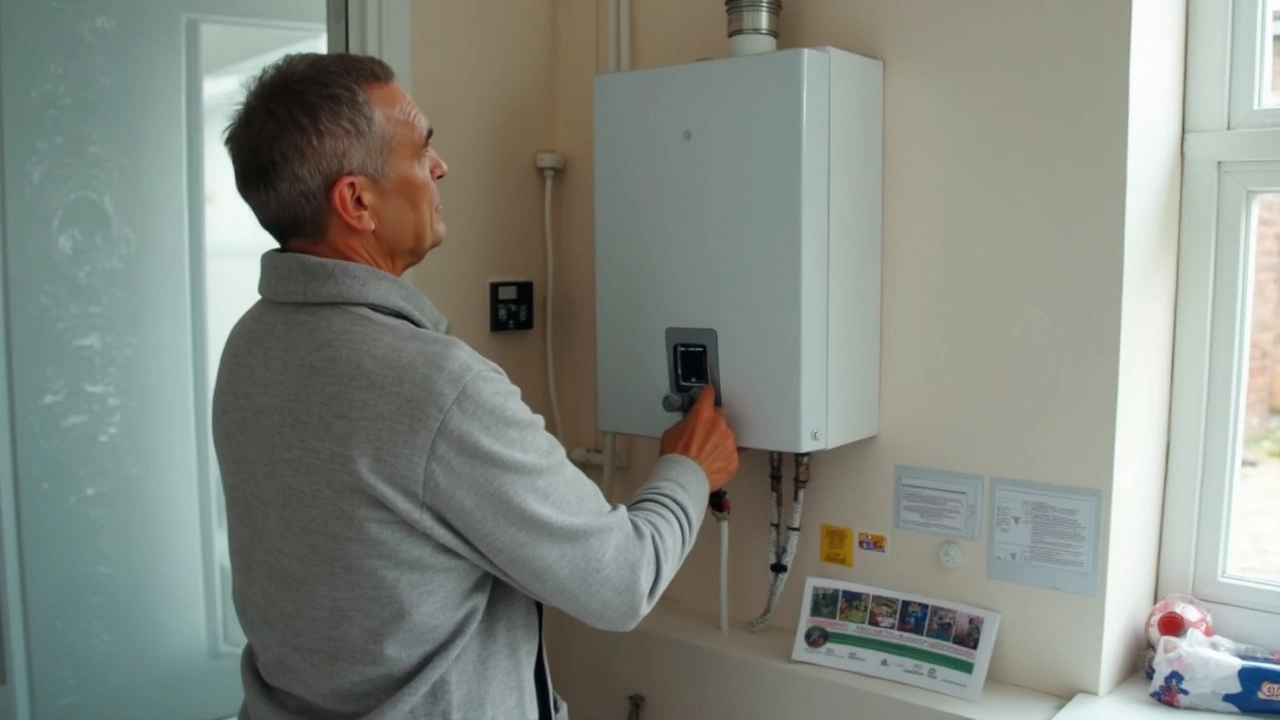Water heaters have a personality—sometimes, they just quit without warning. You walk into the shower expecting a hot blast, and instead, you get hit with Arctic water. At that moment, you might remember someone once said to 'reset the water heater.' But the real question is, do you need to shut off the breaker first?
Short answer? If your water heater runs on electricity, flipping the breaker can save you from nasty surprises, like zapping yourself. Most electric water heaters hide the reset button behind a metal panel. That means reaching near wires that might still be live. Gas heaters are a different beast altogether, and breakers aren't even part of their reset routine.
So before grabbing a screwdriver, always double-check how your water heater works. Don't just poke around based on a hunch. Some newer models offer reset buttons right out in the open, but older ones nearly always tuck them away where things get risky. Safety trumps speed—don’t try shortcuts when dealing with 240 volts.
- Why Resetting a Water Heater Matters
- Should You Always Turn Off the Breaker?
- Step-by-Step: Safely Resetting Your Water Heater
- What Can Go Wrong If You Skip the Breaker
- Extra Tips for Smooth Water Heater Repairs
Why Resetting a Water Heater Matters
Ever notice your shower turns cold suddenly, or the water never heats up like it used to? Most electric water heaters have a built-in safety switch called a high-limit switch, sometimes called the "reset button." This switch trips when things get too hot, which helps stop the tank from overheating or even getting damaged. It's basically a last line of defense if something goes wrong inside, like a stuck thermostat or a burned-out heating element.
If your water heater stops working, there’s a good chance the reset button has popped. Hitting reset isn’t just about making the water hot again. It tells you something’s not right, and it's the system's way of preventing bigger problems—nobody wants a fried wire or the risk of an electrical fire.
Here’s the deal: If your heater keeps shutting off, it’s not just a one-off glitch. The reset button keeps tripping either because a part is bad or there's another electrical hiccup. Ignoring this or just hitting reset again and again doesn’t solve the root problem. Over time, you could end up replacing the whole heater instead of fixing a quick issue.
So, why does everyone keep talking about the breaker? Flipping the breaker protects you while you push the reset. Electricity and water don’t mix, and it only takes a little contact with the wires to get shocked. Making it a habit to power down means you can safely check reset, troubleshoot, or repair without risking a trip to the ER.
Should You Always Turn Off the Breaker?
Here’s the deal: when it comes to electric water heaters, playing it safe means always turning off the breaker before trying to reset anything. Why? The wires behind that access panel carry serious voltage—usually 240 volts—which is more than enough to cause a nasty shock. Even if your heater looks harmless, looks can fool you. That reset button isn’t worth an emergency room visit.
This is standard advice from the National Electrical Code and even printed right on most water heater panels. Some folks cut corners, but professional plumbers and electricians always flip the breaker first. It’s not about being scared; it’s just smart. Accidentally bumping a wire with a tool while the power’s still on can fry both you and your heater.
There’s another angle, too. If your water heater keeps tripping the reset button or breaker, that's a sign something's up inside—maybe a bad thermostat or a failing heating element. Leaving the breaker on while you reset it won’t solve the real issue and might make things worse. Think of the water heater repair process as a team effort with your breaker switch.
- Always locate your water heater’s breaker on your main panel—usually labeled 'water heater' or 'WH.'
- Flip it fully to the 'off' position before doing anything inside the water heater.
- If you’re not sure which breaker does what, spend a minute to check. Guessing with electricity is not a great hobby.
Quick tip: After resetting, flip the breaker back on only when the panel is closed and your hands are out of the way. Waiting that extra minute is worth skipping the pain and a possible repair bill.

Step-by-Step: Safely Resetting Your Water Heater
Resetting an electric water heater isn’t rocket science, but a few steps can make all the difference between a hot shower and a household mishap. Most importantly, don’t forget about safety—you’re dealing with a serious amount of voltage.
- Turn off the breaker to your water heater. Go to your electrical panel and flip the switch labeled for your water heater. This step keeps you safe from shocks, even if you just need to press a reset button.
- Wait a couple of minutes. This gives any power left in the wires or the board a chance to drain out. You don’t want any surprises here.
- Take off the access panel on your water heater. Some heaters have one panel, some have two (top and bottom heating elements). Use a screwdriver and keep track of the screws.
- Peel back the insulation if there’s any. You should see a red button, which is the reset button. On older models, it can be tucked in pretty tight, so keep an eye out.
- Press the reset button until you hear or feel a click. That’s the signal it’s been triggered. Sometimes the button can stick, or your finger might slip, so double-check that you really pushed it.
- Put the insulation back in place and screw the cover panel back on. Don’t leave anything off, even if you think you’ll be back in there soon.
- Go flip the breaker back on. You’ll hear the heater start humming after a few seconds—good sign it’s coming back to life.
Now, give it a little time. It can take between 30 to 60 minutes for a typical 40-gallon tank to fully reheat, depending on your model and the home's wiring. If you still aren’t getting hot water, there might be a deeper problem, like a bad thermostat, faulty element, or a wiring issue. At that point, you might want to call a pro before you start hunting for answers on your own.
And here’s a tip—never reset your water heater repair process without flipping the breaker. It’s not just about protecting the heater. It could save your life.
What Can Go Wrong If You Skip the Breaker
Messing with a water heater without shutting off the breaker is like working on your car while it’s still running. You might get away with it, but the risks are not worth it. Most electric water heaters run on 240 volts—enough to make a grown man jump across the room. A quick slip of the screwdriver and you could get shocked. That's the most obvious danger, but it's not the only one.
There’s also the risk of shorting out the internal parts. When you remove the cover to access the reset button or heating element, exposed wires can easily brush against metal tools or even your hands. This might fry the thermostat or heating element, which means a simple water heater repair turns into a major replacement job.
Here’s a breakdown of what could happen if you skip the breaker step:
- Electric shock: Water and electricity are a bad mix. If water has leaked inside the panels—common with older heaters—the risk shoots way up.
- Component damage: Leaving the power on may cause sparks if metal tools touch the wrong spot. That kind of arc can melt wires or blow a fuse instantly.
- Tripped breaker: Sometimes, messing with a live heater will just trip the main breaker. That seems harmless until you realize repeated tripping wears out breakers and wiring over time.
- Fire risk: Bad wiring, sparks, or damaged insulation can actually cause a fire. According to the National Fire Protection Association, electrical failures are behind about 13% of home structure fires.
- Warranty violation: Some manufacturers clearly state in the manual that you must disconnect power before repairs. Skip it and your warranty may be void.
Check out how common these problems are, based on available data:
| Problem | Estimated Frequency |
|---|---|
| Electric Shock Incidents | Over 1,000/year (U.S., all appliances) |
| Water Heater Fire Causes | Approx. 1,300/year (U.S., home structure fires) |
| Warranty Claims Denied (Power Left On) | Roughly 18% of denied claims (brand reports) |
Skipping the breaker to save a few seconds just isn’t worth it. Take the minute to turn it off and play it safe every time you need to poke around an electric water heater.

Extra Tips for Smooth Water Heater Repairs
Resetting your water heater safely is just the start. Keeping your hot water running without headaches means paying attention to a few things pros always do, and skipping what DIYers often get wrong.
First up: double-check the power—use a voltage tester before you mess with any wires or touch reset buttons. Even if you flipped the breaker, it's smart to make sure no hidden wire is carrying juice. More than half of all water heater repair injuries happen because homeowners skip this step, according to the Electrical Safety Foundation International.
Next, wear basic safety gear when you open panels: rubber-soled shoes and gloves make a real difference. It sounds like overkill, but one slip is all it takes to ruin your day.
- Flush your tank every six months. A quick drain removes the gunk that makes your water heater less efficient and noisy.
- Inspect the supply pipes for leaks. Even a slow drip wastes water and can rot floors or drywall over time.
- Keep the area around your heater clean and clear. Anything shoved up against it traps heat, which can trigger the reset button and shorten its life.
- Check the thermostat setting: keeping it at 120°F is safer, saves energy, and reduces scald risk.
Here's a handy table showing some stats about common problems and how often folks run into them during water heater repair:
| Problem | % of Homeowners Affected | How to Prevent It |
|---|---|---|
| Tripped Breaker | 41% | Don’t overload circuits, check wiring yearly |
| Faulty Reset Button | 31% | Test reset button every 6 months |
| Sediment Buildup | 27% | Flush tank twice a year |
| Leaking Pipes | 18% | Inspect pipes once a month |
If you’re ever unsure, don’t wing it. Call a licensed plumber or electrician. Hot water is great, but staying safe—and dry—is even better.

